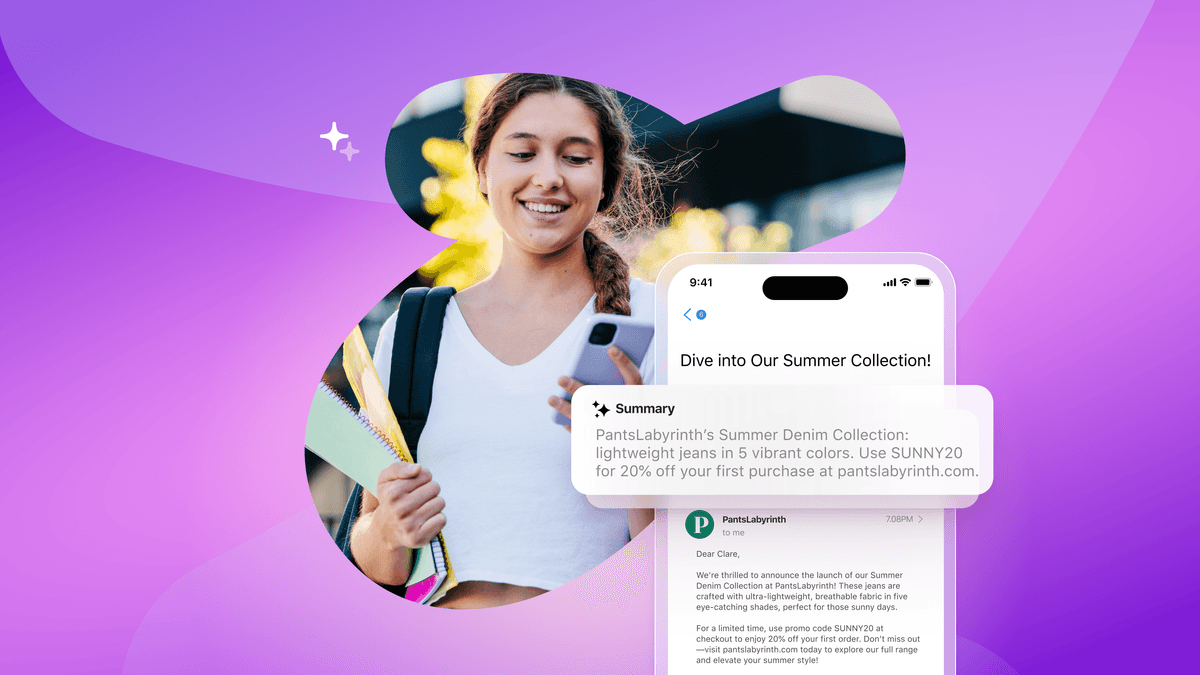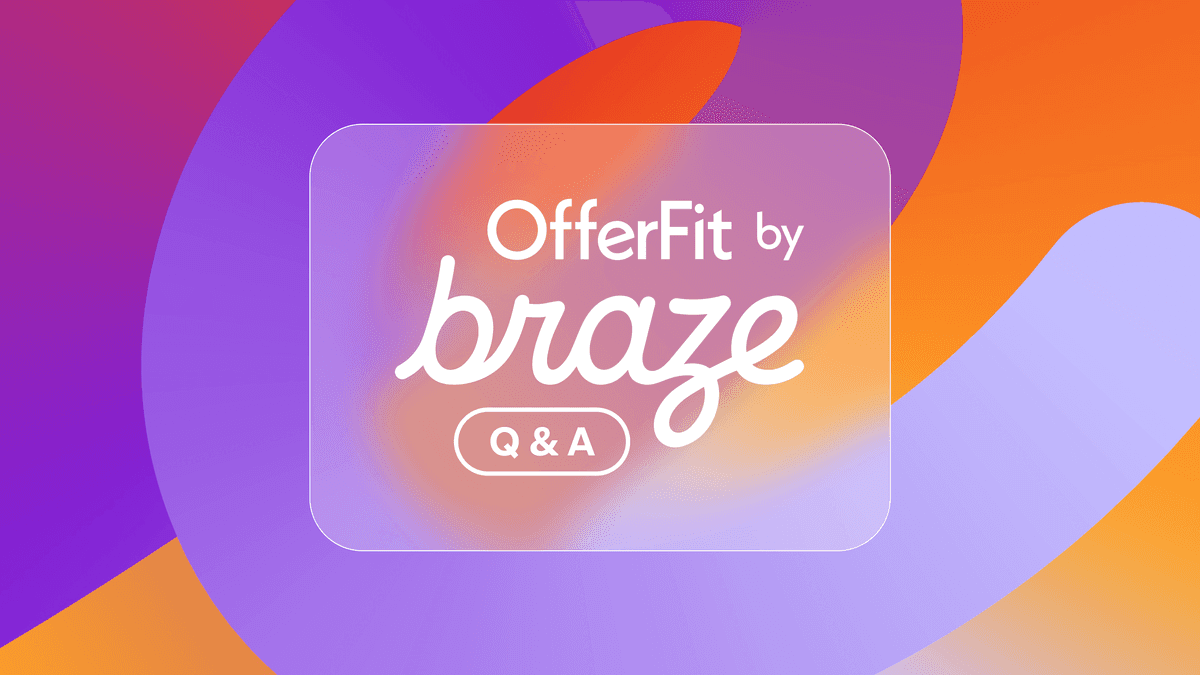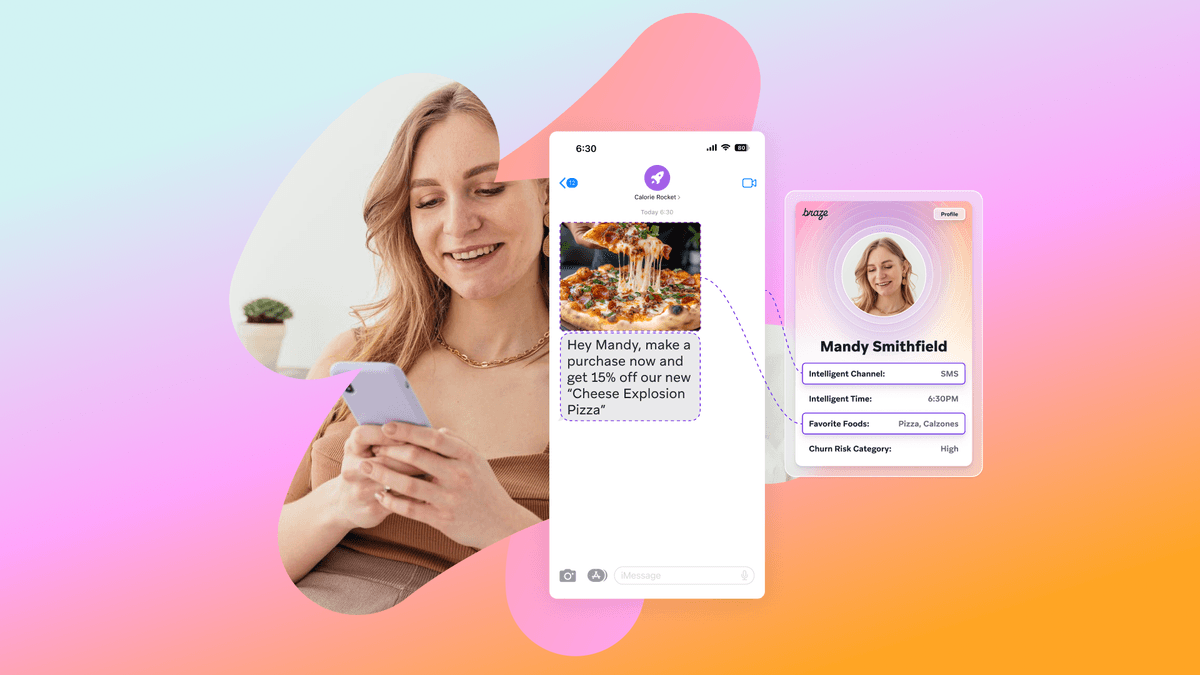Help Your Customers Unplug: A Call for Conscious Marketing
Published on August 01, 2016/Last edited on August 01, 2016/10 min read


Team Braze
Smartphones hit the scene in the early aughts. The first baby iPhone came to market in 2007, which means they’ve been in our lives for fewer than ten years, if you can believe it. In that time, smartphones have reshaped how we interact with and experience our world in some deeply fundamental ways.
Continuous, uninterrupted access to the web has turned our phones into a sort of “external memory source” to supplement our native memory sources (aka, our brains). Our sleep patterns have changed. The way we interact in our homes and with our families has changed. The very nature of our brains has changed.
We don’t suggest that “change” means “bad,” of course. Many behavioral scientists are optimistic about these changes. Amber Case, for example, studies the symbiotic interactions between humans and machines. She believes the intensification of how we continue to meld with our devices will quickly “reduce the distance between individual and community” and that we’ll experience “unprecedented rapid learning and communication.”
Others are a bit more circumspect. Dr. David Greenfield is founder of the Center for Internet and Technology Addiction, and professor of psychiatry at the University of Connecticut School of Medicine. He’s been studying the internet and writing about it since the late 90s. He’s concerned with cases of tech overuse, and how these behaviors shape lives individually and collectively.
As a marketer, why should you give a hoot about how smartphone use changes us?
Before we get into the social and psychoactive impacts of technology overuse and abuse, why should you care enough to dig into this piece in the first place?
The easy answer is: you’re also a smartphone user in the world. You’re a consumer. The effects of phone use are as present in your life as they are in the lives of your users and customers.
Possibly the harder part of the answer, but one with a silver lining, is: you have the power, as someone with access to a very specific world, to be part of the solution. As a digital marketer, you work in a world where users are encouraged to be web- and phone-oriented. Maybe there’s a way to be more healthful in how you approach those sorts of encouragements, and as we’ll see below, there’s likely a business case for helping your customers use their phones less. Let’s dive in.
Will there be a saturation point?
What’s the one thing tech and information-overload demands the most?
It’s time.
It’s “the thing nobody has more of,” says Dr. Greenfield, but it’s the thing most in demand in the world of digital marketing. Greenfield rightly observes that, “everybody is fighting, in the commercial sector, to get a piece of our time or attention.”
As marketers, we’re all vying for a finite set of eyes, in a finite world, among individuals with a finite amount of time to disperse. What marketers might want to anticipate, Greenfield suggests, is that a sort of backlash might be coming.
Looking beyond relationship marketing
Companies have already begun to embrace concepts like relationship marketing, and the effects of personalization in marketing communications are well documented. To further humanize the experience, argues Greenfield, companies who “take into consideration the addictive nature of technology,” will be seen as more progressive. They’ll be seen as more congruent with human values.
Reconsidering the “old model” of repetitive exposure
“Repetitive exposure to your message won’t necessarily make [people] do what you want,” says Greenfield. “This is the pre-internet model. It goes back to old print media.”
In print media, the only way to get action or attention to a product or service was repetitive exposure. The reason this might not work as well as it used to is because of the overload. Now, marketing communications are personalized, they’re multichannel, they’re on our computers, in our pockets, in our inboxes, on our watches, and sometimes, they follow us as we move around in retail spaces and concerts. Plus, we get messages from any brand that can get us to opt in, sign up, or subscribe, which we sometimes do inadvertently. Before, it was a bit of junk mail, a little ad in the paper.
“It was relatively low key,” says Dr. Greenfield. “Now it’s hundreds [of messages], constantly coming through. Human attention is not capable of processing that kind of information. At a certain point, people shut down.”
What are the concerns?
Before we get to some suggestions for solutions—and we do! down below—let’s first get into what it is Dr. Greenfield is so concerned about.
There are a number of things that happen in addiction behavior that also happen when people use the internet. These behaviors include time distortion (how’d all that time pass?), perceived anonymity (I can say whatever I want in this YouTube comment), accelerated intimacy (I love this person I’ve never met), boundarilessness, and more.
“Almost everyone who uses the web disassociates,” says Greenfield. We lose track of time and space. The ease of access, the feelings of disinhibition, all of these things go into making the internet a potent and compelling medium to use.
The brain doesn’t like unfinished business
We all know that nagging feeling of incompletion. After a conversation with a friend, for example, you might be left with a strange feeling that there was a thread dropped somewhere. Every medium of communication or entertainment—a book, a movie, a phone call, and so on—has a beginning, middle, and end. The web does not. “There’s nothing about the web that has any boundary or finality,” observes Dr. Greenfield. “And the brain doesn’t like unfinished business.”
In an effort to try to complete a task, the brain will return again and again to an idea until it feels it’s complete. “That’s why people get addicted” to this aspect of the web experience, says Greenfield. The web is hyperlinked forever with no end. (Except from here to the end of this blog post—no more links. Promise!)
“So there’s this forever phenomenon,” Greenfield says, which leaves the brain unsettled, searching in perpetuity, feeling like a task has been left incomplete.
Neurological changes can mimic anxiety and depression
Every time you get a text from a love interest, see a positive remark on a social media post, or win a game, a happy little gush of dopamine is released in your brain.
Dopamine is a pleasure chemical. It’s the very same chemical that’s released when we eat chocolate and fall in love. We use the web, we feel rewarded in a hundred different ways each day, and bam: dopamine goes coursing through your body producing lovely feelings.
It sounds like a nice story, but what happens ultimately, explains Dr. Greenfield, “is you flood the brain with dopaminergic innervation.” That means your brain is overdoing it in a big way. This increases the number of receptors required to absorb all that dopamine floating around in your bloodstream. “Then, if you stop feeding those receptors, you create a higher need. If you don’t continue to fulfill the need, there’s desensitization and withdrawal.”
Can this desensitization mimic depression? “One hundred percent,” said Greenfield. “And anxiety. And feelings of being generally ill at ease.”
Phones, the internet, and addictive behavior
Remember the last time you forgot your phone, and a panic set in? “That tells you that there’s a drug experience happening. That’s what psychoactive means. You’re drugging yourself in small doses. The shorter the latency between the click and the desired piece of info, whether it’s a photo or a search or whatever, the more potentially intoxicating that experience it is.”
There’s something unique about the quality of the dopamine hit when we use the internet, as compared to other types of happy-chemical experiences. “It operates on a variable reinforcement,” says Greenfield.
Each time you log in, you don’t know what you’ll find. There’s a dynamic unpredictability. “It’s the most potent form of reinforcement for the brain, and the most resistant to extinction,” meaning the behavior is hard to stop. Using the web, regardless of the portal we use to access it, conditions us, and that conditioning carries the potential to create a compulsive pattern of use, even in personalities that are not traditionally addictive.
But the internet isn’t going anywhere, and we still need to market our products and services
You may remain unmoved by all of the information above. But if so, we can probably all agree that finding ourselves at that aforementioned saturation point seems likely. Many of us are already feeling fed up with the constant stream of promotions, alerts, texts, emails, and other notifications trying to get us to buy, use, engage, download, and upgrade. How much time do we spend each morning deleting emails from the promotions tab in our email inbox? There are apps for managing our apps, plugins for managing our email, services for managing our passwords to all our services. We continue to give time to the task of managing it all, but at some point, it just makes sense that these efforts, and the time we take devoted to managing the onslaught, will lose its appeal.
So as a marketer, how can you get in front of that eventuality, to prepare for a moment when your customers declare enough is enough?
Encourage conscious use
Amber Case, mentioned above, believes that, “when you have no external input, that is the time when there’s the creation of self… when you can try and figure out who you really are.”
Consider encouraging your users to make choices about how and when they use your site or access your apps, as opposed to encouraging unconscious, absentminded forever-checking. (Possibility to track in your data: Meaningful engagement actions may be more likely to happen during consciously chosen check-in times.)

Encourage boredom
“Boredom is not the devil,” says Dr. Greenfield. “It’s a conduit to renewal and creativity. Out of nothingness comes inspiration.” If you never have a moment when you’re offline and bored, you’ll never be inspired. “You’re literally shutting down your own creativity,” and potentially your customers’ creativity.

Encourage real world connections
We all crave in-person interactions and face time with our friends and family. While phones can of course connect us across long distances where otherwise we might not catch up for months or even years, they can get in the way of our nearby connections. Conversations at dinner come to mind.
Brands can connect more authentically to their users by encouraging them to pick their heads up every once in awhile and get out into the world. This out-in-the-world element is very likely partly to thank for the Pokemon Go craze.

Social responsibility is good marketing
Social values are values large groups of people share. “There’s opportunity here,” says Greenfield, “for a company that wants to be on the cutting edge.” There’s opportunity for a company that wants to take early accountability and responsibility for something that’s having a broad and potentially deleterious impact on us as a culture.
As a consumer, not as a marketer, how much of your life do you really want to spend sorting through ads and marketing campaigns? “If I were a company,” says Greenfield, “I would incorporate that value into my marketing.”
The message becomes, “We want you to have a balanced life. And when you’re ready, we want to be there.”

Be on the cutting edge by being accountable, respectful
“If you want to reach someone like me, who has money to spend, don’t take too much of my time,” says Greenfield. “What I don’t think has been recognized yet is that time is the ultimate commodity. And it’s completely limited.”
On being willing to think differently
Real, healthy relationships are built on symbiosis. That requires caring about the wellbeing of the other, beyond the value of their last purchase. As long as we’re willing to adapt to user needs and desires, and to meet users where they’re at—which tends to be where we’re at as consumers and users of technology, too—we’re on the right track.
Digital marketing is an industry that, by nature, demands agility and forward thinking. Maintaining relationships by backing off a bit could be part of the forward thinking that will delight your customers for the long term.
Be Absolutely Engaging.™
Sign up for regular updates from Braze.
Related Content
View the Blog
How Android 16 and iOS 26 are reshaping customer engagement

Haley Trost

Introducing OfferFit by Braze: Answering burning questions

Matt Kreisher

Personalized content: Strategies for delivering 1:1 experiences at scale
